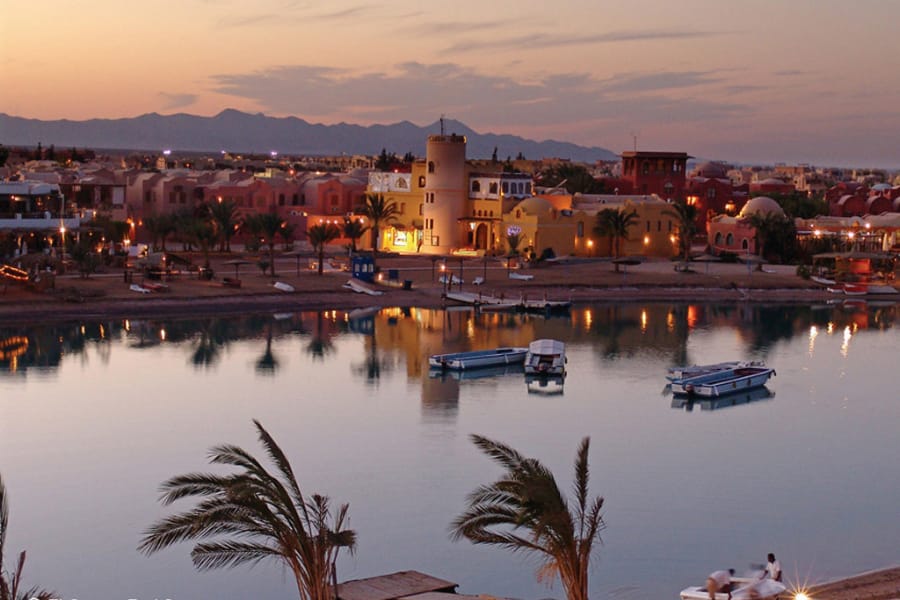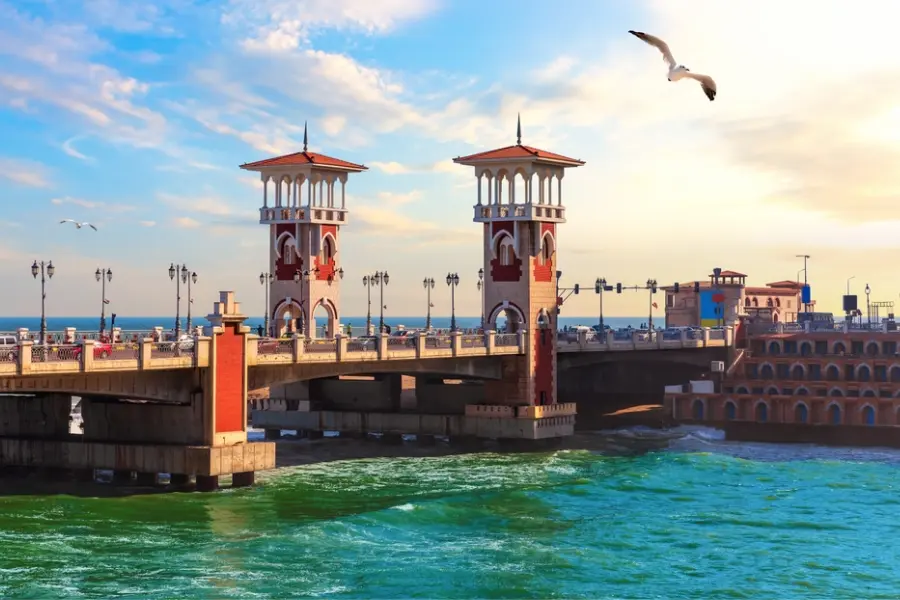Luxor Temple – History, Architecture & Facts of Ancient Thebes
Is one of the finest monuments of the New Kingdom. Raised on the east bank of the Nile in Thebes (modern Luxor), it blends royal power, sacred ritual, and masterful architecture into a single grand complex.
Built initially by Amenhotep III and expanded by Ramses II, Tutankhamun, and Horemheb, the temple was dedicated to Amun, Mut, and Khonsu and remained the ceremonial heart of ancient Thebes for centuries.
Today, visitors walk through towering pylons and illuminated colonnades where pharaohs once paraded during the Opet Festival. This timeless sanctuary stands not only as a masterpiece of ancient Egyptian art but as a living testament to the glory of Luxor—the world’s greatest open-air museum.
Key Takeaways – Luxor Temple
- Prime New Kingdom temple on Luxor’s east bank; cornerstone of ancient Thebes.
- Founded by Amenhotep III; expanded by Tutankhamun, Horemheb & Ramses II.
- Dedicated to Amun, Mut, and Khonsu; central to the annual Opet Festival.
- Highlights: Great Pylon, Ramses II court, Amenhotep III colonnade, shrine of Amun, Avenue of Sphinxes.
- Directly linked to Karnak Temple via the processional way.
What is Luxor Temple?
Luxor Temple is one of the most significant and best-preserved religious complexes of ancient Egypt—an enduring testament to New Kingdom artistry, politics, and faith. Unlike the vast Karnak Temple dedicated to the gods, Luxor Temple was built to celebrate the divine nature of kingship itself. It was here that pharaohs were crowned, rituals renewed royal power, and the sacred procession of the Opet Festival began its journey along the Avenue of Sphinxes.
Majestic Luxor Temple
Where is Luxor Temple located?
Luxor Temple stands proudly in the heart of Luxor City, on the east bank of the Nile River—about 3 km south of the Karnak Temple. In ancient times, this site formed the ceremonial axis of Thebes, linking the royal palaces, temples, and the Avenue of Sphinxes. The temple’s riverside location symbolized renewal and divine rebirth, perfectly aligning with the annual Opet Festival processions that connected Luxor and Karnak.
When was Luxor Temple built—and who ordered it?
The Construction of the Temple of Luxor began in the 14th century BC under Amenhotep III (18th Dynasty). It continued under Tutankhamun and Horemheb and was dramatically expanded by Ramses II, who added the Great Pylon, colossal statues, and the famous colonnade.
What was the importance of Luxor Temple?
Dedicated to the Theban Triad—Amun, Mut, and Khonsu—the Luxor Temple was not only a house of worship but the ceremonial heart of ancient Thebes. It served as the sacred stage for royal coronations, festivals, and divine renewal rituals. The most famous was the annual Opet Festival, when the gods’ barques were carried in a grand procession along the Avenue of Sphinxes between Karnak and Luxor Temples. These ceremonies symbolized the unity of heaven and earth, reaffirming the pharaoh’s divine authority and Egypt’s eternal order.
How was Luxor Temple constructed and expanded?
The construction of the Luxor Temple began under Amenhotep III, who designed the temple’s core sanctuary, offering halls, and inner courts to honor Amun-Ra. His successors, Tutankhamun and Horemheb, restored and decorated the reliefs, adding symbolic scenes of royal devotion. Later, Ramses II expanded the complex on a monumental scale—constructing the Great Pylon, erecting colossal seated statues, and placing an obelisk at the entrance. Each phase reflected the pharaohs’ desire to immortalize their legacy and maintain harmony with the gods.
Architectural features of Luxor Temple
Visitors enter the Luxor Temple through the massive pylon of Ramses II, flanked by colossal statues of the pharaoh and what was once a pair of obelisks—one of which now stands in Paris. Beyond lies a vast open court surrounded by double rows of columns, leading to the elegant colonnade of Amenhotep III, its towering papyrus-shaped columns symbolizing the primeval swamp of creation. Deeper inside are the hypostyle halls, chapels, and the sacred Sanctuary of Amun, where rituals and offerings were performed. Together, these architectural features create a seamless procession from the earthly to the divine, showcasing the spiritual and artistic mastery of ancient Egypt.
Major Highlights & Monuments of Luxor Temple
1) The Great Pylon
This colossal, awe-inspiring gateway was constructed by Ramses II. Adorned with magnificent reliefs and towering statues, the Pylon serves as the ceremonial entrance to Luxor Temple, symbolically marking the monumental threshold between the human world and the sacred, divine realm.
2) Avenue of Sphinxes
This legendary, sacred processional way once stretched nearly two miles, linking Karnak Temple directly to Luxor Temple. Lined with hundreds of reconstructed sphinx statues, it was utilized for major celebrations, most famously the Opet Festival, connecting the two great sanctuaries of ancient Thebes.
3) The Great Courtyard of Ramses II
A vast and open-air space framed by elegant colonnades, this courtyard was designed by Ramses II to be a monumental setting. It served as the key location for grand public worship, sacred rituals, offerings, and royal festivals.
4) Colonnade of Amenhotep III
Fourteen colossal columns, built by Amenhotep III, rise majestically to form this iconic, towering colonnade. Each column is intricately carved with scenes of royal offerings and festival processions dedicated to the great state god, Amun.
5) Statues of Ramses II
Massive seated statues of Ramses II dominate the temple’s entrance pylons. These monumental effigies were placed to boldly proclaim the Pharaoh’s absolute royal authority and divine legitimacy, showcasing the highest precision and grandeur of New Kingdom craftsmanship.
6) Shrine of Amun
As the inner sanctuary and spiritual core of the entire complex, the Shrine of Amun once held the god’s sacred barque (ceremonial boat) during key processions. Its preserved walls contain exquisite reliefs symbolizing divine rebirth and the maintenance of cosmic order.
7) Chapel of Alexander the Great
This small, distinctive Hellenistic-era chapel honors Alexander the Great, who is unusually depicted in the reliefs as a traditional pharaoh presenting offerings to the Egyptian gods. This inclusion reflects the continued, revered sacred role of Luxor Temple across different ruling cultures and centuries.
Religious Festivals & Celebrations
Luxor Temple was at the heart of the Opet Festival, one of ancient Egypt’s most spectacular celebrations. Statues of Amun, Mut, and Khonsu were carried from Karnak Temple to Luxor along the Avenue of Sphinxes, renewing the divine order and affirming the king’s sacred power before the people of Thebes.
How Did Luxor Temple Survive Through the Ages?
The temple’s remarkable endurance owes to its robust sandstone construction, its continued sacred significance through Egyptian, Greek, and Roman times, and modern restoration efforts. Today, Luxor Temple stands as one of Egypt’s best-preserved monuments—a living link to the ancient world.
The Tale of Building Luxor Temple: A Monument to Ancient Egyptian Grandeur
Chapter 1: The Vision of Amenhotep III
In the magnificent city of Thebes, during the 14th century BCE, Pharaoh Amenhotep III dreamed of creating a sanctuary to honor God Amun, the supreme deity of ancient Egypt. He envisioned a temple that would outshine all others — a beacon of divine power and a legacy that would echo through eternity. Thus began the conception of what we now call the Luxor Temple.
Chapter 2: The Architect’s Plan
To bring his vision to life, Amenhotep III summoned his chief architect, Amenhotep, son of Hapu — one of the most skilled minds of his age. With meticulous precision, he designed a masterpiece that blended tradition with innovation: a vast temple centered around a grand pylon gateway leading into wide courtyards, colossal columns, and sacred halls devoted to divine rituals.
Chapter 3: Laying the Foundation
Once the plans were complete, the great construction began. Thousands of artisans, craftsmen, and laborers toiled under the blazing sun to raise the stones that would shape the Luxor Temple. The foundation was laid upon the fertile banks of the Nile, symbolizing the link between divine creation and earthly life. The work would continue across generations, each pharaoh leaving his own mark of devotion.
Chapter 4: The Triumphs of Tutankhamun and Horemheb
After Amenhotep III’s passing, young King Tutankhamun inherited both his throne and his father’s dream. Despite his short reign, he enriched the temple with statues, sacred carvings, and inscriptions that glorified the divine. His successor, Horemheb, a former general, carried on this sacred mission, expanding the temple and restoring its sanctity after years of religious turbulence.
Chapter 5: The Reign of Ramses II
Under the mighty Ramses II, the Luxor Temple achieved its ultimate grandeur. Known for his passion for monumental architecture, Ramses added the majestic colonnade — a breathtaking hall of 14 towering columns — and a colossal pylon adorned with scenes of his military victories. He also placed his statues at the entrance, ensuring his eternal presence among the gods and the people.
Chapter 6: Religious Significance and Ceremonies
For the ancient Egyptians, Luxor Temple was not merely a monument — it was a living stage of divine celebration. The temple became the focal point of the Opet Festival, a grand procession where the statues of Amun, Mut, and Khonsu journeyed from Karnak Temple to Luxor Temple, symbolizing renewal and divine union. The event reaffirmed the pharaoh’s sacred bond with the gods and his role as the chosen intermediary between heaven and earth.
Chapter 7: The Passage of Time
Centuries rolled by, and the world around Thebes changed. Dynasties fell, religions shifted, and empires rose. Yet, Luxor Temple remained a silent guardian of Egypt’s golden age. Though it was buried under layers of sand for centuries, its essence survived — waiting patiently for rediscovery.
Chapter 8: Rediscovery and Restoration
In the 19th century, explorers and archaeologists unearthed Luxor Temple once more. Through years of excavation and preservation, its ancient walls rose again, whispering stories of the pharaohs who shaped Egypt’s destiny. Restoration projects have since ensured that every traveler to Luxor can stand face-to-face with history itself.
Chapter 9: The Eternal Beauty of Luxor Temple
Today, Luxor Temple stands proudly as one of Egypt’s most magnificent open-air museums — a masterpiece of devotion, power, and artistry. Its towering pylons, colossal statues, and intricate hieroglyphs continue to inspire awe in all who visit. As a designated UNESCO World Heritage Site, it remains a living bridge between Egypt’s divine past and its enduring present — a monument to the brilliance of the ancient world.
Conclusion
Luxor Temple stands as a majestic testament to ancient Egypt’s grandeur—from Amenhotep III’s vision to Ramses II’s colossal expansions. Its courts, pylons, and colonnades still echo with royal ritual and the pulse of Thebes.
Planning a trip to Luxor? Pair Luxor Temple with Karnak Temple and the Valley of the Kings, or include it in our curated Egypt Travel Packages or Nile River Cruises.
Luxor Temple: FAQs
Luxor Temple is on the east bank of the Nile in Luxor, around 3 km south of Karnak Temple, at the heart of ancient Thebes.
The core sanctuary and inner courts were constructed in the 14th century BC by Amenhotep III. Later additions by Tutankhamun, Horemheb, and Ramses II completed the monumental complex.
It was initiated by Amenhotep III and expanded by Tutankhamun, Horemheb, and especially Ramses II, who added the Great Pylon, colossi, and colonnade.
The temple is dedicated to the Theban triad: Amun, Mut, and Khonsu, and played a leading role in the Opet Festival.
Key features include the Great Pylon, Ramses II courtyard, Amenhotep III colonnade, shrine of Amun, and the Avenue of Sphinxes linking it to Karnak.
Construction and expansions spanned several reigns over centuries—from Amenhotep III through the Ramesside period.
Yes. The site and the nearby Avenue of Sphinxes are beautifully illuminated, and evening visits offer dramatic views of the pylon and colonnades.


















